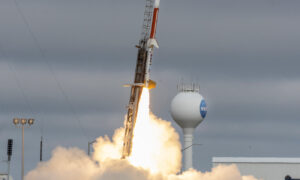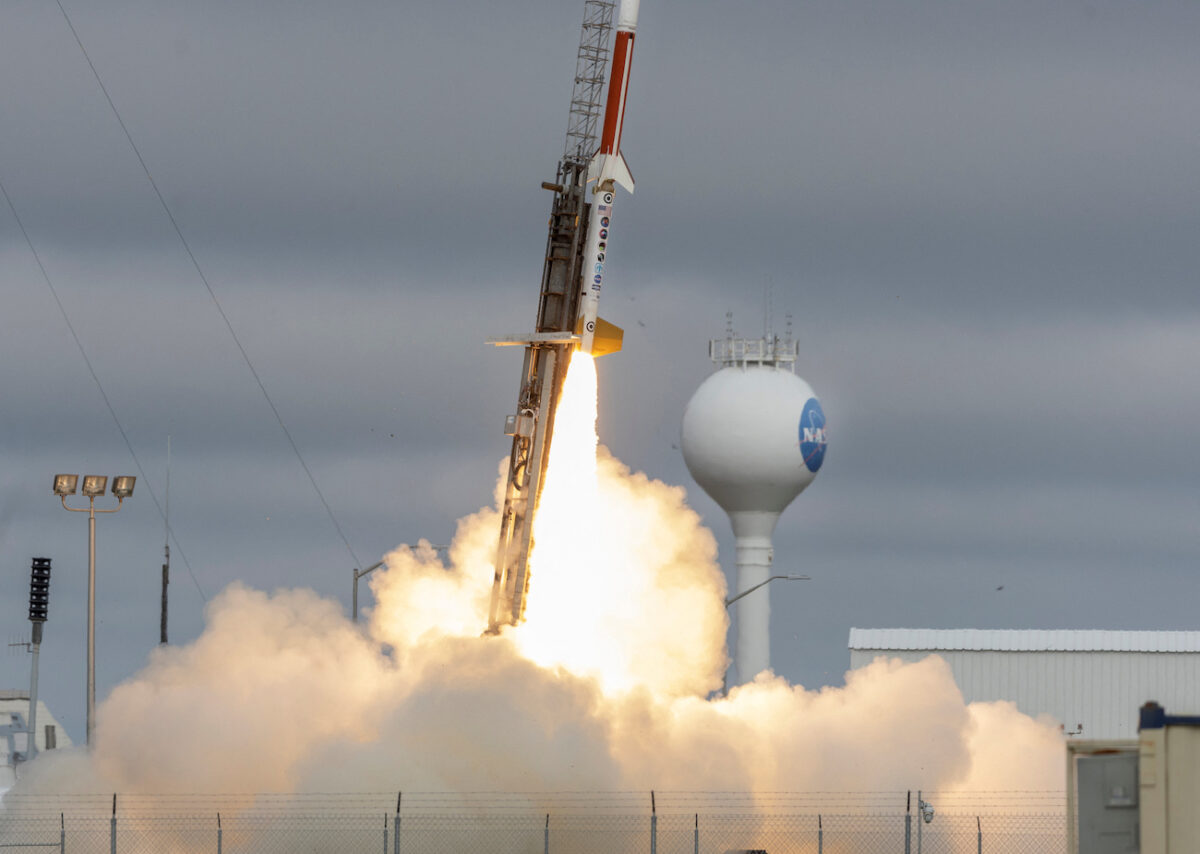
Commentary
On March 28, the Air Force admitted that the March 13 test of Lockheed Martin’s AGM-183 air-launched rapid response weapon (ARRW) was a failure. This failure comes after four years and billions of dollars of taxpayer money sent to Lockheed Martin to develop hypersonic weapons.
And this failure comes in the context of Russia’s recent successful use of its own hypersonic missiles in the Russia–Ukraine war and highlights the fact that, unlike China, Russia, and perhaps even Iran and North Korea, the United States has yet to develop a fieldable hypersonic missile.
But before proceeding further, it’s worth reviewing what we mean by hypersonic missile. After all, since 1957, with the successful launch of the first Atlas intercontinental ballistic missile (ICBM), the United States has had missiles that greatly exceed Mach 5 velocities, which is the threshold for what’s defined as hypersonic velocity. In fact, ICBMs can reach velocities of 15,000 miles per hour, about Mach 23. The difference is that while ballistic missiles fly at hypersonic speeds much greater than Mach 5, they largely follow a ballistic (parabolic) trajectory with very little ability to deviate from that ballistic trajectory. And they typically fly above or what’s near to the edge of what’s considered space (about 60 miles in altitude).
In contrast, so-called hypersonic weapons, whether they be cruise missiles or hypersonic glide vehicles, all have much greater ability to maneuver than traditional ballistic missiles. Additionally, because the plasma field they generate at hypersonic speeds absorbs radar, they’re hard to track during the hypersonic phase of flight. Their enhanced stealthiness and maneuverability, coupled with their greater speed, make them more difficult to defend against than slower missiles. They also will typically follow lower altitude paths that provide a more direct path to the target. On the downside, they do have much larger thermal signatures than their slower supersonic and subsonic cousins.
Though they aren’t the panacea some seem to think, having hypersonic missiles, air breathing or rocket powered, as part of your arsenal is definitely an advantage. That the United States, despite having a defense budget far greater than that of China, Russia, Iran, and North Korea combined, is playing catchup raises questions that deserve answers.
Regarding defense budgets, in 2021 Russia’s defense budget was $66 billion, whereas the United States Defense budget was $800 billion, with other NATO members having a collective defense budget of $362 billion. Yet, Russia has fielded at least three hypersonic missiles, including the Kinzhal, the Zircon, and the Avatar.
China just successfully tested a new nuclear-capable hypersonic missile that can circle the globe before descending and maneuvering to strike its target. While this missile hasn’t been deployed, China has already deployed its DF-ZF hypersonic glide vehicle in 2020 that can be paired up with short-range ballistic missiles such as the DF-11 and DF-15 and medium-range ballistic missiles such as the DF-17 and DF-21 that allow it to strike naval and land targets at ranges up to 1,800 miles. Rounding out China’s hypervelocity missiles is the YJ-21 hypersonic antiship missiles that China unveiled in April 2022 by firing one from a Type 055 destroyer. This hypersonic missile is thought to have a range of around 900 miles and a speed of approximately Mach 5, with its air-launched variant, the CJ-21, having a significantly greater range.
Meanwhile, Iran is claiming it has developed a hypersonic ballistic missile capable of penetrating all defenses. And North Korea is claiming a successful test of its Mars Type 8 hypersonic boost glide missile. Recent analysis contracted by Break Defense magazine concludes that North Korean claims are credible.
That the United States is significantly lagging Russia and China in hypersonic weapon development is highly concerning. That the United States appears to be lagging both Iran and North Korea in terms of having deployable hypersonic missiles is just plain embarrassing.
One reason the United States lags China and other countries is the unwillingness of the United States to conduct test flights. Apparently, we prefer to spend billions endlessly modeling how a hypersonic missile might perform rather than actually testing a missile to see how it really does perform and then making design changes based on real-world data. This is reminiscent of Space-X’s very successful design and test philosophy that uses destructive testing to gather real data versus NASA’s fear-driven policy of avoiding test “failures” out of fear of losing funding.
In a December 2021 Defense Post article, “retired U.S. Air Force Gen. John Hyten remarked that the service needs to be worried because the United States has only conducted nine hypersonic missile tests [up through December 2021], whereas China has already carried out ‘hundreds’ of missile trials. ‘Single digits vs hundreds is not a good place,’ he said.”
The hundreds of tests have allowed China to make incremental design improvements based on real-world data. And perhaps just as important, the real-world data gained from the test flights has allowed China to improve the accuracy of its computer-based modeling.
Russia’s lead in hypersonic missile technology comes directly out of its long history of testing and fielding successful supersonic anti-ship missiles such as the SS-N-22 “Sunburn,” the BrahMos (jointly developed with India), the P-700 “Granit,” and the P-800 “Oniks,” etc. In fact, for decades the Soviet Union, and now Russia, has been able to field a wide array of highly maneuverable supersonic missiles capable of striking ships and land targets that vastly outclass U.S. anti-ship missiles. Indeed, Russia’s expertise in rockets and missiles has played a major role in many countries’ missile development programs, including those of China, India, North Korea, and Iran, etc.
True to form, China has combined expertise stolen and purchased from Russia and the West with its own extensive research and development efforts to field whole new classes of missiles whose capabilities far exceed anything the United States currently has in service. These missile systems, along with the previously mentioned YF-21 hypersonic anti-ship missile, include hypersonic anti-ship ballistic missiles (ASBMs) such as the DF-17, DF-21D, and DF-26B with ranges of 900 miles and 2,500 miles, respectively. While these hypersonic ASBMs may not be as maneuverable as non-ballistic and quasi-ballistic hypersonic missiles, they are more maneuverable than previous ballistic missiles.
According to the Center for Strategic and International Studies, China has up to 1,950 short and medium-range ballistic missiles with an unknown, but significant, portion of these being the high maneuverability anti-ship variants. Further, China has programs that allow it to use its existing ballistic missiles to be used as boost vehicles for hypersonic glide vehicles.
All the above isn’t to say that the United States hasn’t been involved in researching and developing hypersonic weapons. Starting in the 2000s, the United States has invested billions of dollars into researching hypersonic weapons, but despite outspending other countries it has yet to deploy one. That this is the case suggests perhaps, just perhaps, that U.S. taxpayers aren’t getting a good bang for their buck from the U.S. military-industrial Congressional complex.
It suggests that instead of just dumping more money into an already bloated defense budget we should be looking at executing the disruptive and dramatic defense procurement reforms needed to regain the ability to provide what our military needs at a cost a country running annual deficits of over $1 trillion dollars can afford.
Views expressed in this article are the opinions of the author and do not necessarily reflect the views of The Epoch Times.


















































